1930
1930. Very Good. An Art Deco toile fabric that captures the glamour of alcohol during Prohibition -- cocktail shaker, martini glasses, snazzily and elegantly dressed people, a door with a sign saying "Private House" -- this an explicit nod to Prohibition, we believe -- a background repeat of stars, this evoking the night and all its frolic and forbidden pleasures, a flying stairway -- is that a reference to a speakeasy, or a "stairway to Heaven", or both? -- and not least,the bottles of gin. We don't know the make of this fabric, and our dating, which is really circa 1930, has to be on the mark. It is possible that it was made in England, where one could drink freely, but there was plenty of awareness of Prohibition, and the effect on culture of Prohibition had freshet of spillover on culture outside the US. We have two pieces of the fabric. The larger piece, 152 by 43 cm, has two columns, and we are of the thinking this captures the entirety of the toile design -- or put another way, represented are all the motifs, which are then just repeated. But we can't guarantee this. One column shows people drinking and some of the settings where they do it suggested. The parallel column is entirely of the objects associated with drink -- bottles, glasses, cocktail shakers. The second piece is just of the column with drinkers. It is 99 by 20 cm. We can't imagine an aesthetic more appropriate for the subject than Art Deco, which was then the prevailing Modernist style, but also, the most immediate imagery of the era for many of us is from innumerable Hollywood films depicting sophisticates, Art Deco is everywhere, from the lettering and decoration of the film credits to the decor of the apartments, the clubs and other settings. The fabric design also has a levity as well, such as the branding of the gin as "High & Dry" Gin. These light touches go along with the sophisticated aura that drinking had inspired, as epitomized by Nick and Nora Charles. (The novel was first published shortly after the repeal of Prohibition but the glamour of drinking and all its associations lingered long after.) The Art Deco style manifests itself in many ways, among them, the streamlined illustration, not abstract, but economical and minimal in its depiction of people and objects. Also the simplicity of ornamentation -- ruled lines, stars -- not to mention the color choices. The smaller piece has a number of small holes, and spots where the fabric has worn thin. The larger has considerably less deterioration, butit too has a hole, a tear, etc. That said, these flaws really don't affect how one might display the pieces, we believe.
(Inventory #: 20493)
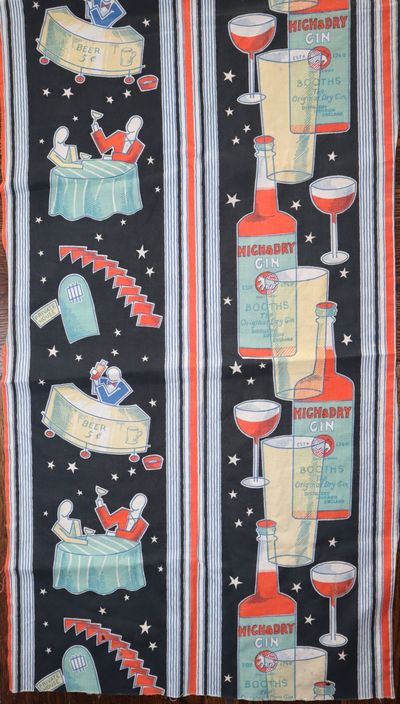
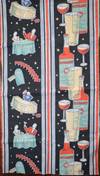

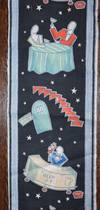


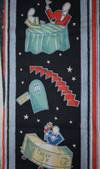
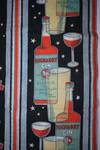
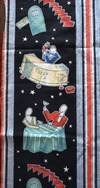
![[Souvenir Theatre Programme] Revudeville at the Windmill](https://d3525k1ryd2155.cloudfront.net/h/319/213/1693213319.0.m.jpg)
